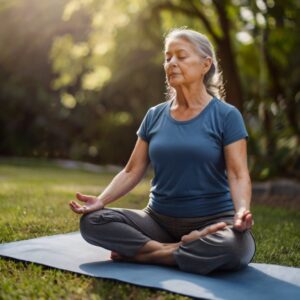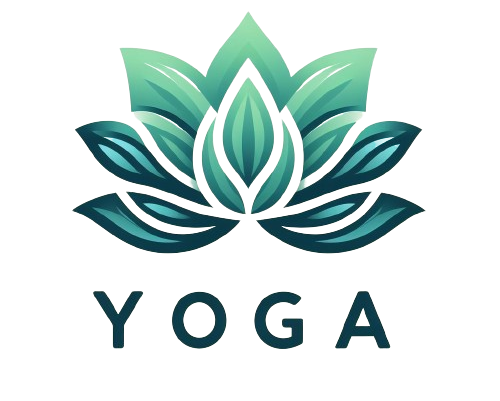So, you’re probably wondering, “Why is a 20-something chatting about meditation for seniors?” Well, it’s simple. We’re all on this crazy ride called life, and finding peace shouldn’t just be a young person’s game. Plus, let’s be real, in this fast-paced world, who wouldn’t benefit from a slice of serenity, especially our elders?
Why Meditation Rocks for Golden Agers

Meditation indeed offers a plethora of benefits, especially for the golden agers, making it much more than a simple pursuit of Zen. For seniors, engaging in meditation can serve as a pivotal tool for enhancing their overall mental health and for boosting cognitive functions that may tend to decline with age. This includes improvements in memory, focus, and the ability to process information. Meditation has also been linked with physical health benefits, such as reduced blood pressure, better sleep patterns, and alleviation of pain and stiffness, which can be particularly beneficial for those dealing with chronic conditions or the general aches and pains that often come with aging. Its low barrier to entry and the fact that it can be adapted to suit various levels of mobility and energy make meditation an accessible and highly beneficial activity for seniors. If one prefers a quiet session focused on breathwork, a guided meditation through apps or classes, or even incorporating gentle movement through practices like Tai Chi or Qigong, meditation can be tailored to fit everyone’s lifestyle and physical capabilities. Through regular practice, it can truly act as a natural rejuvenate button, enhancing quality of life without the need for any special equipment or physical exertion.
Getting Started
Starting your meditation journey with short sessions is a wise approach that fosters patience and reduces the chance of feeling overwhelmed. Five to ten minutes a day is an ideal timeframe for beginners, as it allows you to familiarize yourself with the practice without it feeling like a major commitment. This manageable duration can easily fit into most daily routines, ensuring that even on the busiest of days, finding time for meditation remains attainable. As your comfort with meditation grows, and as you start to experience the benefits of your practice, naturally, you may feel inclined to gradually extend the length of your sessions. This progression should feel as organic as possible, allowing your body and mind to guide you without imposing strict expectations on yourself. Remember, the essence of meditation lies in the quality of awareness you bring into the moment, not in the quantity of time you spend in stillness. Approaching your practice with a gentle, non-judgmental attitude will help you build a sustainable and fulfilling meditation routine that can support your well-being for years to come.
Meditation Styles for Every Senior
Meditation offers a rich palette of styles to suit every personality and physical capability, especially for seniors seeking to enhance their quality of life through mindful practices. Mindfulness meditation is the art of residing fully in the present moment, a practice of anchoring one’s attention to the breath, the surrounding sounds, or the sensations within the body. Such practice teaches patience and helps cultivate a non-judgmental awareness of the mind’s tendency to wander, gently corralling it back to the present. It’s an exercise in building focus and awareness.
Guided meditation, provides a structured meditation experience, perfect for those who may find it challenging to focus or prefer a more directed approach. Through the sounds of a soothing voice or visualization scripts, practitioners are led on a journey through peaceful landscapes or guided to imagine healing light suffusing their bodies, thereby aiding in relaxation and stress reduction.
Breath awareness meditation is a testament to the power of turning one’s focus inward to something as involuntary and constant as breathing. This practice emphasizes the rhythm of the breath, guiding the individual to notice each inhale and exhale, and the pauses in between. It’s a form of meditation that highlights how mindfulness of basic bodily functions can serve as a profound tool for calming the mind and reducing anxiety.
Moving meditation, such as Tai Chi, Qigong, and gentle yoga, introduces a dynamic component to meditation. Perfect for those who find more traditional, stationary forms of meditation challenging, these practices combine gentle movements with breath control and mental focus. This helps in maintaining physical flexibility and balance and in fostering a moving mindfulness that can be particularly engaging and beneficial for seniors.
Each of these meditation styles offers unique benefits and approaches to mindfulness, allowing individuals to experiment and find the technique that resonates most deeply with them. For seniors, these practices can significantly improve mental clarity, reduce stress, and enhance overall wellbeing. Engaging regularly with any of these forms of meditation can lead to profound personal growth and a deeper sense of peace in later life.
Tips for a Smoother Journey
Flexibility in your meditation practice can be a critical factor for sustained success and enjoyment. Life is inherently unpredictable, and there may be days when your carefully planned meditation routine doesn’t quite fit into your schedule as you hoped. Instead of viewing this as a failure or a setback, embrace flexibility as your secret weapon. If you missed your morning session due to an unexpected event or simply because you needed a few extra minutes of sleep, don’t be too hard on yourself. Look for another pocket of time later in the day. Perhaps a midday pause could serve as the perfect reset button, or an evening session might help you unwind and reflect on your day. The true essence of a meditation practice lies in its regularity and the benefits it brings, not in the exact timing of the practice. By adopting a flexible approach, you allow meditation to seamlessly integrate into your life, making it easier to maintain your practice over the long term. This adaptability helps in keeping the practice stress-free and ensures that you’re able to reap the full range of benefits meditation has to offer, irrespective of the time of day you engage in it.
